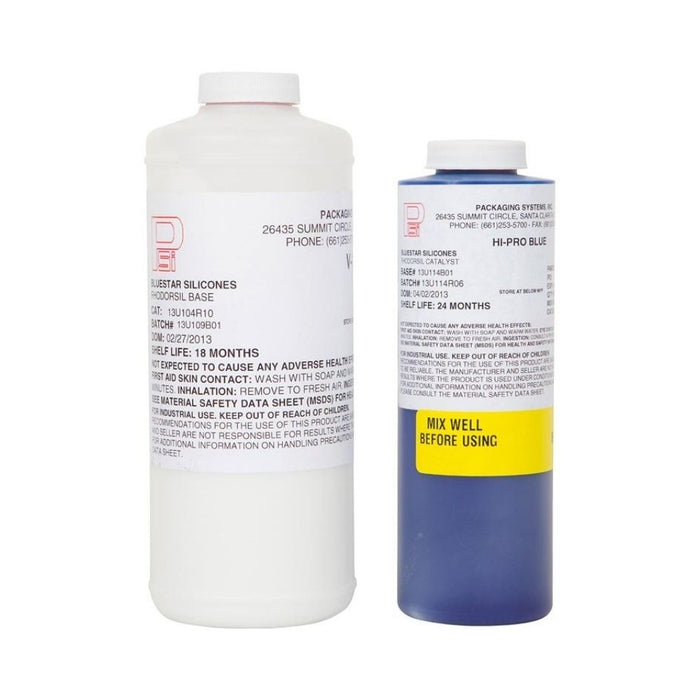
Bluestar 1065 Silicone
1065 Silicone is a high strength, two-component, tin catalyzed, room temperature cure silicone rubber.
What it is:
is a high strength, two-component, tin catalyzed, room temperature cure
silicone rubber. It is designed as a 25 Durometer (Shore A), medium viscosity rubber providing
excellent physical properties, long library life and accurate detail reproduction. BLUESTAR 1065
is the most popular moldmaking material in the Bluestar Silicones line
How to use:
1. Stir the base (Part A) well before use (except when machine dispensing).
2. Shake the catalyst container (Part B) well before use.
3. Weigh the desired amount of base into a clean mixing container. Tip the container and roll the base all the way around the
side wall up to two inches from the top. This will prevent the catalyst from becoming absorbed into the container. It is
recommended that the container be filled to not more than 1/3 the container depth to allow sufficient room for expansion
during the deaeration procedure.
4. Weigh the proper amount of catalyst into the container. Mix the base and catalyst together by stirring with a stiff, flat ended
metal spatula until a uniform color is obtained. Scrape the container walls and bottom well to insure a thorough mix.
5.Place the container into a vacuum chamber and evacuate the entrapped air from the mixture using a vacuum pump
capable of achieving 29 inches of mercury vacuum. The mixture will rise, crest and then collapse in the container.
Interruption (bumping) of the vacuum may be necessary to prevent overflowing the container. Keep the mixture under full
vacuum for 2-3 minutes after the material has receded in the container.
6. Bleed air slowly into the vacuum chamber. When the chamber is at atmospheric equilibrium, remove the cover plate and
take out the container.
7. Pour the deaired material slowly in a steady stream from one end of the mold box so that the material flows evenly over the
pattern. This should minimize entrapment of air bubbles under the flowing material. A "print" coat may be poured first over
the pattern which will also help reduce the possibility of entrapping air on the pattern and in the cured rubber. A mold
release (petroleum jelly) may be applied on the pattern first to improve release.
8. Allow the rubber to cure for 16-24 hours at 75±5°F (24°C) before removing the cured rubber mold from the pattern. Heat
acceleration is not recommended with this product.
9. For best results, allow the mold to air cure an additional 24 hours before using it in production. Full cure is achieved in 3-7
days.
Tips and Tricks:
Lower temperatures and humidity will increase the work life and pot life of the material. The slower cure will increase the
flow time. Cure temperatures below 68°F (20°C) are not recommended and have been found to cause a reduction in final
cure hardness and properties.
It is important that the catalyst containers are tightly closed after use. Catalyst exposed to air for extended periods of time
will hydrolyze (cure). An indication of hydrolysis is a film or crust formation on the surface of the catalyst. The use of
hydrolyzed catalyst is not recommended and may cause incomplete cure.

For more information, go to www.P65Warnings.ca.gov
